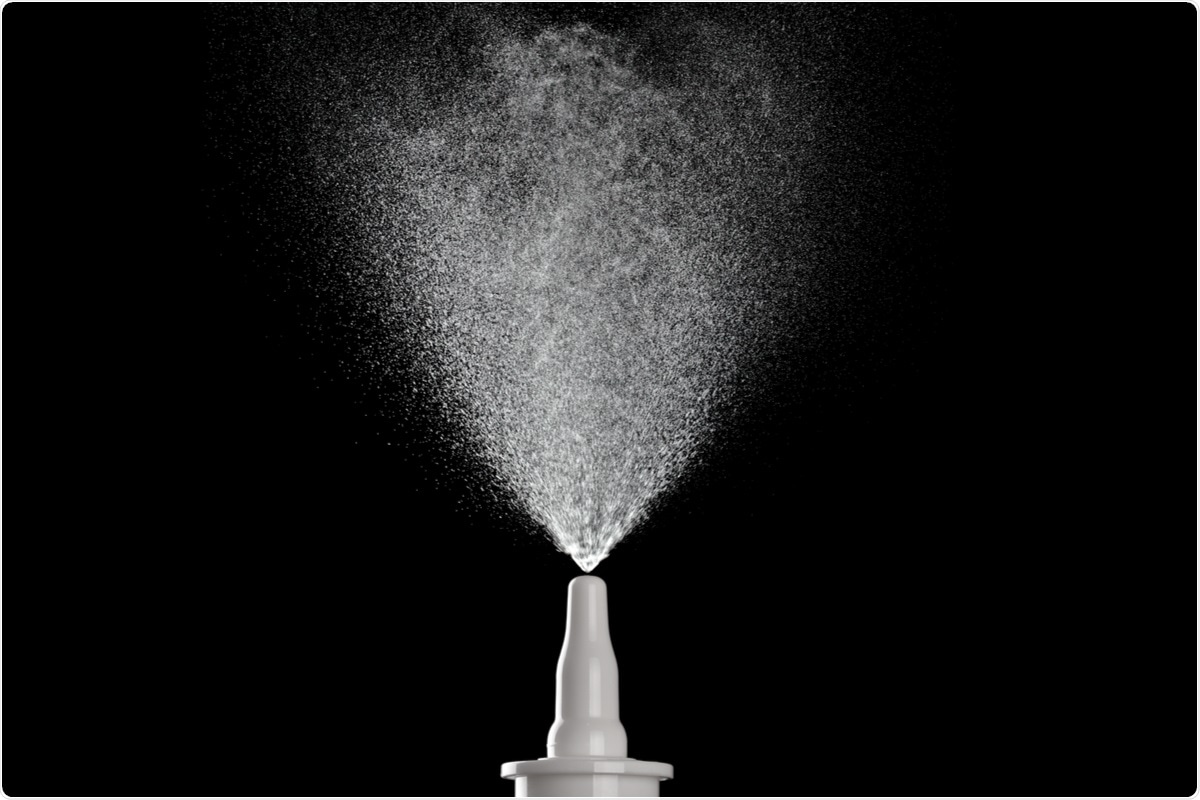N-alpha-lauroyl-L-arginine ethyl ester hydrochloride (ELAH or LEAH) is classified by the United States Food and Drug Administration (FDA) as a ‘generally recognized as safe’ (GRAS) food preservative. ELAH arrests microbial colonization and proliferation in the oronasal mucosa.
In a recent study published on the preprint server Research Square*, researchers evaluate the virucidal effects of ELAH against the severe acute respiratory syndrome coronavirus 2 (SARS-CoV-2) and human coronavirus-229E (HCoV-229E) in a nasal spray formulation.

Study: The effects of ethyl lauroyl arginine hydrochloride (ELAH) in nasal spray on SARS-CoV-2. Image Credit: pics five / Shutterstock.com

 *Important notice: Research Square publishes preliminary scientific reports that are not peer-reviewed and, therefore, should not be regarded as conclusive, guide clinical practice/health-related behavior, or treated as established information.
*Important notice: Research Square publishes preliminary scientific reports that are not peer-reviewed and, therefore, should not be regarded as conclusive, guide clinical practice/health-related behavior, or treated as established information.
About the study
In the current study, the researchers generated pseudovirus vesicular stomatitis virus (VSV) SARS-CoV-2 wild-type and Delta strains. The ELAH nasal spray formulation was then used to treat Vero cells after infection with VSV-SARS-CoV-2 wild-type or Delta strains, as well as HCoV-229E.
In addition to assessing the in vitro effect of the ELAH nasal spray, the researchers also used this formulation to treat both male and female golden Syrian hamsters to determine the retention of ELAH in mice, as well as the in vivo antiviral effects of ELAH on SARS-CoV-2-infected hamsters. A quantitative reverse transcription-polymerase chain reaction (qRT-PCR) assay was then used to quantify the amount of viral RNA present in oral swabs of the hamsters after treatment.
Study findings
VSV-SARS-CoV-2-infected Vero cells exhibited a maximum inhibition of 90% following treatment with 110 mg/ml and 200 mg/ml ELAH. This observation suggests that ELAH either binds directly to or interferes with the VSV-SARS-CoV-2 spike protein, thus preventing its attachment to the angiotensin-converting enzyme 2 (ACE2) receptor present in the Vero cells and the subsequent viral replication process.
In vivo studies on the intranasal retentivity of ELAH in Syrian golden hamsters found no leakage to occur ten minutes after a mock infection with 2% fetal bovine serum (FBS). The amount of moisture around the nose could not be quantified.
While assessing the protective effects of ELAH treatment in SARS-CoV-2-infected hamsters, the researchers reported a significant weight loss in the control group six days post-treatment, whereas mice treated with ELAH regained any lost weight in the following eight days. No significant weight loss was observed within 14 days of ELAH treatment in SARS-CoV-2-infected mice.
In addition to protecting against weight loss, SARS-CoV-2-infected hamsters that were subsequently treated with 0.5 mg/ml or 1 mg/ml ELAH exhibited a reduction in their viral load by over two logs as compared to the control group. Taken together, these findings suggest that ELAH treatment conferred some protection against SARS-CoV-2 infection in Syrian golden hamsters.
Further evaluation of the effect of ELAH on SARS-CoV-2 Delta-infected Vero cells similarly found altered spike protein that prevented viral entry into the cells, subsequently inhibiting viral replication.
A significant cytopathic effect (CPE) was reported in MRC-5 cells infected with HCoV-229E as compared to cells treated with 0.5 mg/ml or 1 mg/ml ELAH. This finding confirms a marked inhibition of virus-induced CPE when cells are initially treated with ELAH.
High-resolution scanning electron microscopy (SEM) analysis revealed newly synthesized virus on the surface of HCoV-229E infected cells 48 hours post-infection as compared to a reduced number of virions detected on infected cell surfaces treated with ELAH prior to infection by HCoV-229E.
Conclusions
Taken together, the current study confirms that the ELAH nasal spray formulation described here provides both in vitro and in vivo protection against SARS-CoV-2 and HCoV-229E.

 *Important notice: Research Square publishes preliminary scientific reports that are not peer-reviewed and, therefore, should not be regarded as conclusive, guide clinical practice/health-related behavior, or treated as established information.
*Important notice: Research Square publishes preliminary scientific reports that are not peer-reviewed and, therefore, should not be regarded as conclusive, guide clinical practice/health-related behavior, or treated as established information.